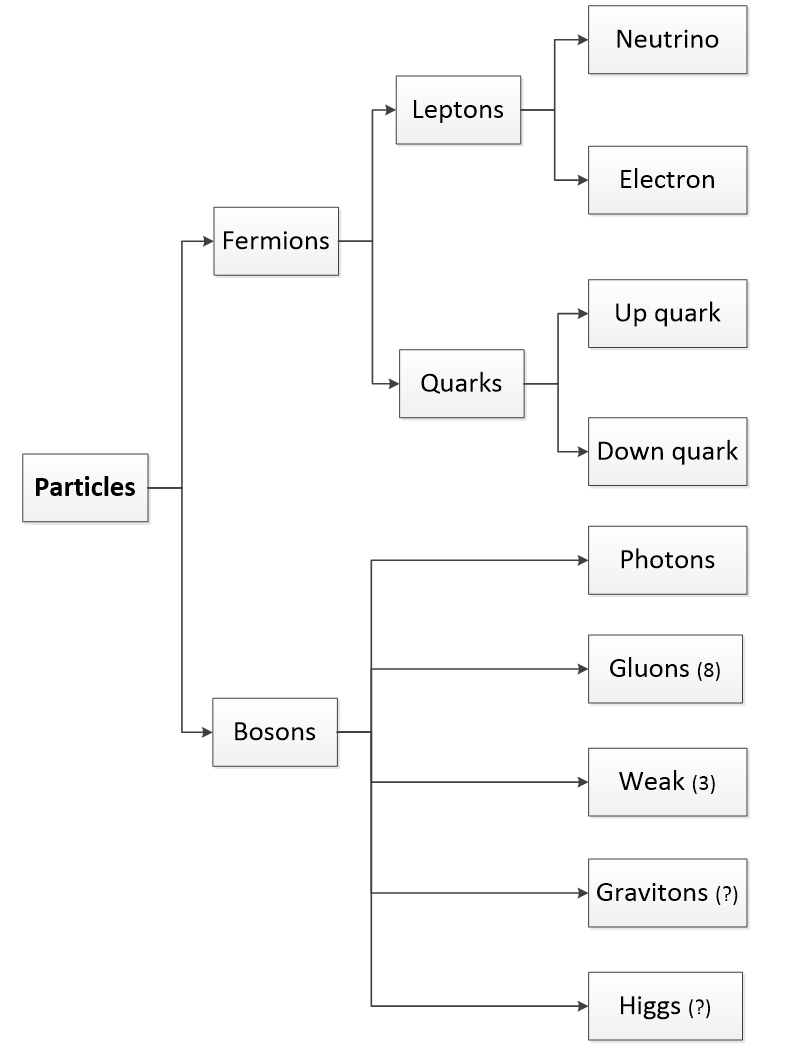Aristotle’s concept of matter as a substance implied that it will break down into basic parts. Battering matter into bits seemed the best way to do that, so physics spent much of last century smashing matter apart to find fundamental particles that can’t be broken down further.
Yet when pressed on what a particle actually is, the experts retreat to equations that don’t describe particles at all. This bait-and-switch, talking about a particle but giving a wave equation, is now the norm. If one points out that the equations describe waves not particles, the answer is it doesn’t matter because they are fictional! Feynman explains how this double-speak began:
“In fact, both objects (electrons and photons) behave somewhat like waves and somewhat like particles. In order to save ourselves from inventing new words such as wavicles, we have chosen to call these objects particles.” (RichardFeyman, 1985), p85.
But imagine if an engineer said “This vehicle has two wheels like a bicycle and an engine like a car so to avoid inventing a new word like motorcycle, we have chosen to call it a car”. A boy with a hammer sees everything as a nail, and likewise experts with particle accelerators think everything is a particle, but the evidence suggests otherwise, because what battering matter apart revealed was:
1. Ephemeral. The tau particle of the standard model is actually a million, million, millionth of a second energy spike. A lightning bolt is long-lived compared to that, and we don’t call it a particle, so why is a tau a particle? Isn’t a particle supposed to subsist?
2. Transformable. When a neutron decays into a proton and an electron, three fundamental particles become four, so how are they fundamental? Fundamental refers to what forms the base for other things, not what is itself transformed.
3. Massive. The fundamental top quark has the same mass as a gold nucleus of 79 protons and 118 neutrons, but why does the cosmic Lego-set have such a huge building block? It is no surprise that this supposedly fundamental entity plays no part at all in the function of the universe we see.
4. Unstable. If a top quark is fundamental, why does it decay into other particles? Calling a particle that instantly decays fundamental is a strange use of the term.
Entities that decay and transform into each other aren’t fundamental because what is fundamental shouldn’t decay or transform, and energy events that last less than a millionth of a second aren’t particles because what is substantial should last longer than that. It follows that the fundamental particles of the standard model are neither fundamental nor particles.
To clarify, imagine building a house from bricks that are its fundamental parts. But how can one build a house from bricks that disappear when you pick them up, or from bricks that are bigger than the house itself, or from bricks that fall apart, or from bricks that transform when put together? Of all the matter building blocks of the standard model, only the electron is stable alone, and it adds hardly anything to the mass of an atom.

Figure 4.18 shows the fundamental particles of the standard model, which divide into fermion particles and virtual bosons that make things happen. This, we are told, is the end of the story because particle accelerators can’t break things down any further. How then do particles that exist at a point take up space? Apparently, invisible fields generate virtual particles to keep them apart, and this circular argument can’t be tested because virtual particles are unobservable.
The particle model survives because we are conditioned to not look behind the curtain of physical reality. The wizard of Oz told Dorothy: “Pay no attention to that man behind the curtain” to distract her from what really orchestrates events, and likewise today’s wizards tell us to pay no attention to the quantum waves that quantum theory says orchestrate physical events. Therefore, let us look behind the curtain of physical reality to see what really causes them.